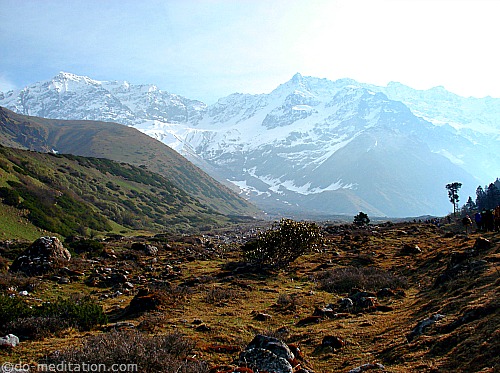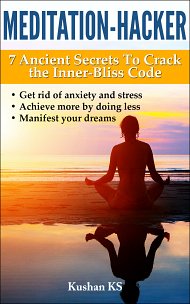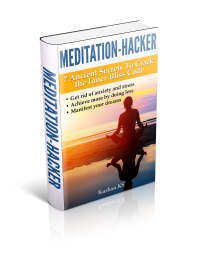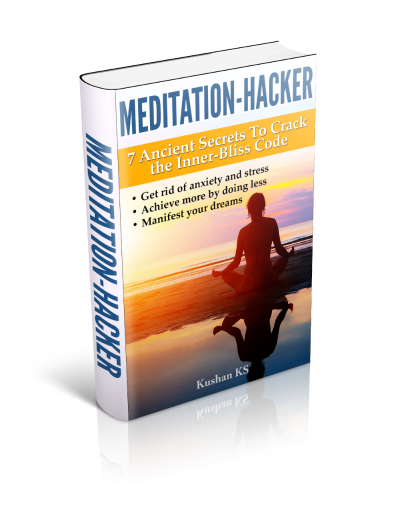Simple Meditation for Anxiety Reduction
"All you need is just to be watchful, and nothing will affect you. This unaffectedness will keep your purity, and this purity has certainly the freshness of life, the joy of existence - all the treasures you have been endowed with" - Osho

Doing meditation for controlling anxiety helps in many ways, but before we go any further, let's start with defining anxiety so we fully understand the nature of the problem.
According to Medical News website, "Anxiety is a general term for several disorders that cause nervousness, fear, apprehension and worrying. These disorders affect how we feel and behave, and they can manifest real physical symptoms. Mild anxiety is vague and unsettling, while severe anxiety can be extremely debilitating, having a serious impact on daily life."
The classical physical symptoms of anxiety are muscle tension, trembling, restlessness, heart palpitations, irritability, stomach churning, choking sensation, faintness, sleep problems and sweating or flushing.
Then there are the insidious emotional symptoms such as inability to concentrate, indecision, lack of confidence, feelings of guilt, feeling of loneliness, loss of motivation, obsessive thoughts and paralyzing fear.
Clearly, no one can lead an optimal life, unless these symptoms are eradicated first.
How can meditation help with anxiety?
More than just calming the mind, meditation has been shown to induce positive changes in the body.
It affects the autonomous (involuntary) nervous system (ANS), which regulates many organs and muscles that control functions such as heartbeat, sweating, breathing, and digestion.
ANS has two major parts:
1. The sympathetic nervous system mobilizes the body for action.
When a person is under stress, it produces the “fight-or-flight response” - heart rate and breathing rate go up and blood vessels narrow, restricting the flow of blood.
2. The parasympathetic nervous system causes the heart rate and breathing rate to slow down, the blood vessels to dilate, improving blood flow, and the flow of digestive juices increases.
Meditation works by reducing activity in the sympathetic nervous system and by increasing activity in the parasympathetic nervous system, which automatically address the physical symptoms of anxiety.
In a provocative new study, 18 public elementary school teachers attended a weekly mindfulness training session, in addition to an all-day "immersion experience."
After eight weeks of practicing meditation for at least 15 minutes daily, the teachers showed reduced symptoms of burnout as indicated by a 22-item scale, compared to a control group of teachers, who did not receive mindfulness training.
"Well-being is actually a skill," said Dr. Richard J. Davidson, professor of psychology and psychiatry at the University of Wisconsin at Madison and the study's senior author. "It's something that can be enhanced with training. If we can take more responsibility for our well-being, we can help to minimize burnout or decrease its severity."
Staying mindful in the present moment and attaining deep relaxation through different types of meditation can negate the emotional stress in our lives and help in alleviating anxiety.
Any one of these breathing meditations will provide quick relief from anxiety, but be patient and allow time for the benefits to manifest.
Do not be anxious if you don't see results after your first session!
Return from Meditation for Anxiety to Meditation Benefits
Return from Meditation for Anxiety to Home

Get my book, Meditation-Hacker: 7 Ancient Secrets to Crack the Inner-Bliss Code and receive valuable information on meditation that you can use to improve the quality of your health and life.


Comments
I would love to hear your meditation experiences. And, if you are a beginner, your questions and apprehensions about meditation. Comment below or contact me directly through the navigation bar on the left of this page.